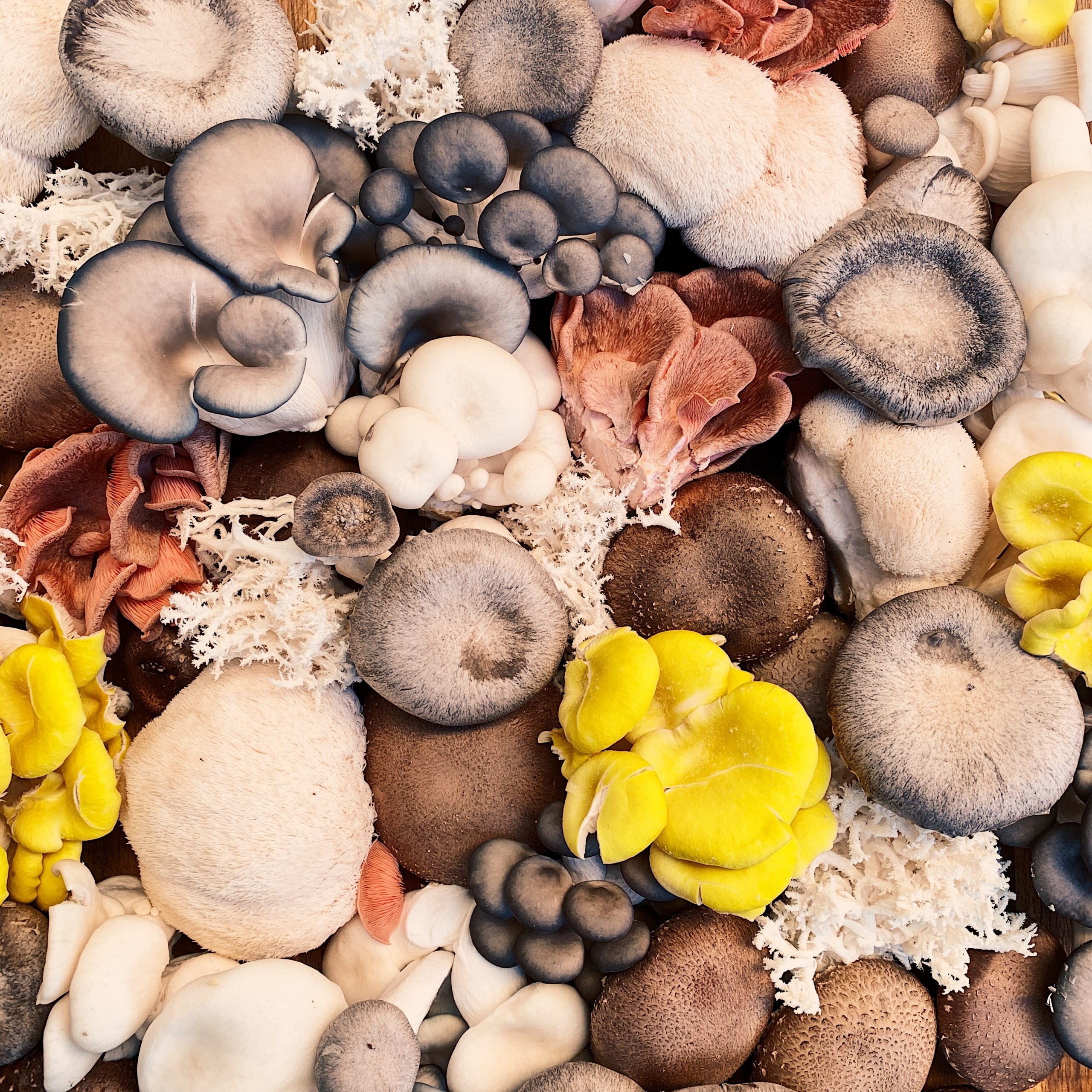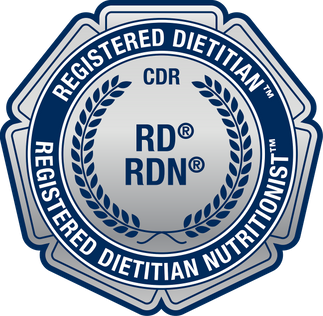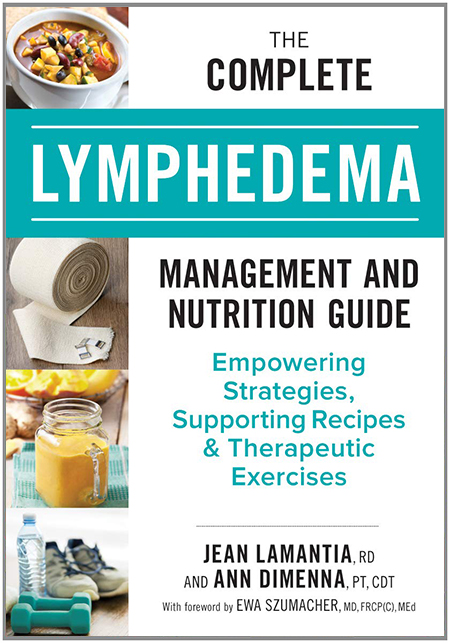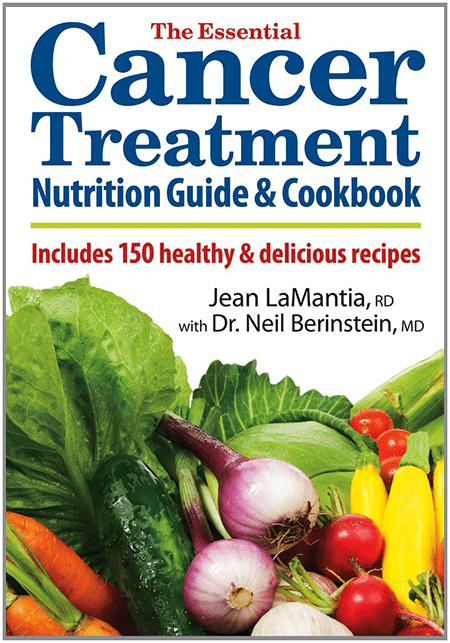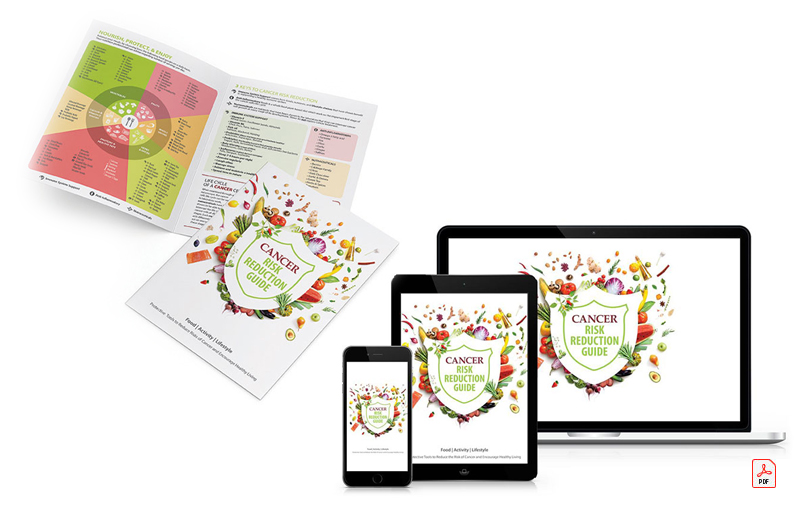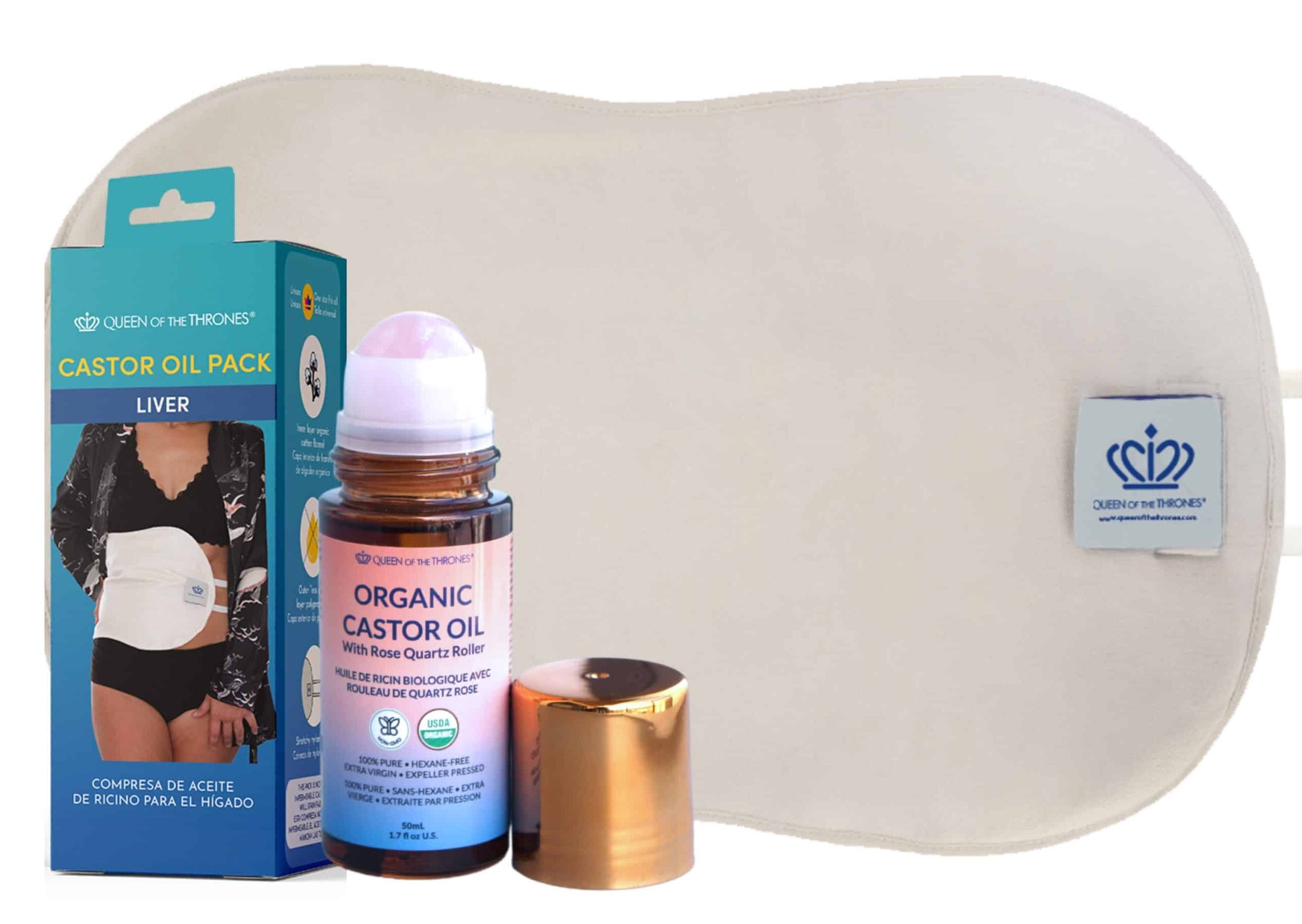Are Mushrooms a Vegetable?
Mushrooms are technically, neither plant nor animal, but an edible fungus, specifically a macro-fungi with fruiting bodies that are grown either spontaneously or they are cultured. They belong to the botanical classes Ascomycetes and Basidocycetes. While they may be considered a vegetable by a chef, they would not be by a botanist.
In this blog post, I’ll provide some important mushroom facts and share some of the research around mushrooms and why I think they should be part of healthy eating plan and especially if you are focused on a cancer risk reduction eating plan.
This blog does not substitute for an individual assessment by a registered dietitian. It may include links to products to amazon, where I earn from qualifying purchases. There is a full reference section at the bottom of the post. You can read this blog from top or bottom or navigate using the Table of Contents
- Facts About Mushrooms, Health and Cancer
- Mushroom Nutrition
- How Mushrooms are Grown
- How to Grow Mushrooms at Home
- Interesting Mushroom Facts
- How Long do Mushrooms Last?
- Are Mushrooms Gluten Free?
- Are Mushrooms FODMAP?
- High FODMAP Mushrooms
- Are Lawn Mushrooms Poisonous?
- Are Mushrooms Autotrophs?
- Are Mushrooms an Aphrodisiac?
- Are Mushrooms Carcinogenic?
- Are Mushrooms Vegan?
- Are Mushrooms Keto?
- Are Mushrooms Alkaline?
- Are Mushrooms Bad for Dogs?
- Are Mushrooms a Nightshade?
- Are Mushrooms a Protein?
- Mushroom Names
- Mushroom Color
- Bottom Line On Mushrooms
- References for Are Mushrooms a Vegetable?…and Other Facts About Mushrooms
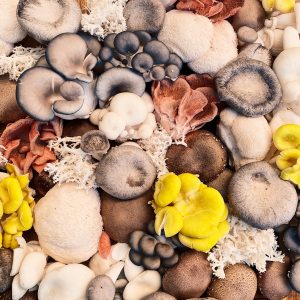
Facts About Mushrooms, Health and Cancer
Mushrooms and Health
Mushrooms have been used as folk medicine and have been attributed with many qualities including antiviral, antibacterial, antiparasitic, antifungal, wound healing, anticancer, immunomodulating, antioxidant, detoxification, anti-hypercholesterolemia, anti-diabetic and more (Chopra, 2021).
Mushrooms and Cancer Research
There are three main types of research done on mushrooms and cancer;
1. Epidemiological studies – these are studies of large populations followed over time. The individuals in these studies provide food records and let the researchers know about any health issues, such as cancer. Then researchers can make associations from the data, for example, eating more vegetables is associated with a reduced risk of getting cancer.
2. Laboratory research. This is work in which cancer cells or an animal with cancer is studied to see what effect a particular treatment or food has on the cancer
3. Clinical trials. These are the most applicable to us, but also done the least. These studies use actual people and give them a particular food and study the effect is has.
I’ll share some of each of these types of studies on mushrooms, immune health and cancer.
Mushroom Intake and Cancer Risk – Epidemiological Studies
The National Health and Nutrition Examination Survey (NHANES) is a famous nutrition study in the U.S. and it is used to publish all kinds of research looking at nutrition and disease risk.
Brand new data from the NHANES has found that mushroom consumption was associated with lower risk of all-cause mortality (Ba, 2021).
Looking at breast cancer specifically, researchers in China did a review and meta-analysis looking for research on the association between mushroom intake and breast cancer (Li, 2014).
After analyzing ten studies with a combined total of 6,890 cases, they concluded that mushroom intake may be inversely associated with risk of breast cancer. This means that, as mushroom intake goes up, breast cancer risk goes down.
They quantified their findings this way; for every 1 gram per day increase in mushroom intake, this provided a relative risk of 0.97. This means that the risk of breast cancer is reduced by 3% for every gram of mushrooms you consume compared to not consuming mushrooms.
The protection seemed even better for post-menopausal breast cancer (relative risk 0.94) than premenopausal cancer (relative risk 0.96). They also acknowledge that this needs to be confirmed with large-scale prospective studies (Li, 2014).
A similar study confirmed that pre-menopausal breast cancer seems to benefit more from mushroom consumption. These researchers also looked at hormone receptor status. They discovered that mushroom consumption may be more protective for those with ER+ and PR+ breast cancers then hormone receptor negative cancers (Shin, 2010).
Mushroom and Cancer Laboratory Research
Laboratory researchers work with cancer cells in a lab. When they introduce mushroom extract to various cancer cells, they can see what affect the mushroom has when in direct contact with the cancer cells.
Research of this type has shown that;
- M. procera (Parasol mushroom) was effective against A549 lung cancer cells and LS174 colon cancer cells
- Lactarius deliciosus (saffron milk cap or red pine mushroom) was effective against HeLa cervical cancer cells
- Inonotus obliquus (chaga mushroom) components showed anti-cancer activity against PC3 prostate cancer cells and MDA-MB-231 breast cancer cells
- Proteins from chaga mushrooms showed anti-cancer activity towards human breast cancer and bladder cancer cell
- Helvella leucopus (slate grey saddle or fluted black elfin saddle) showed anti-cancer activity against HepG2 liver cancer cells
- Ganoderma applanatum (inedible artists bracket fungi) were effective against Caco-2 colon cancer cells
- Flammulina velutipes (enoki mushrooms) have been tested against a dozen different cell lines and mouse models
For a full list of laboratory research of mushrooms, check out the reference section below for Chopra, 2021.
What’s important to point out, is that even though, these mushrooms and extracts or derivatives of mushrooms are effective against cancers in the laboratory and in the mouse, it doesn’t mean, they will work the same way in our bodies.
But this research certainly helps to give a biological mechanism to understand why the population studies that I mentioned above show that mushroom consumption is associated with a reduced risk of cancer.
In addition to the direct effect that mushrooms have against cancer cells, they also have two other mechanisms of action. There is lots of research showing that they 1) benefit the immune system and some studies showing that they are 2) anti-inflammatory (Chopra, 2021).
I’ll remind you, that my 3 Keys to Cancer Risk Reduction are exactly this;
- To support the immune system
- To reduce chronic inflammation
- To act against cancer cells directly
Mushrooms seem to have it all!
To read more about my 3 Keys to Cancer Risk Reduction, order my Cancer Risk Reduction Guide.
Clinical Trials Using Mushrooms
I was also able to find two clinical trials using actual mushrooms and actual humans who ate those mushrooms. I will these studies for you now.
Shiitake Mushrooms and Immune Health
In this study, done at the University of Florida, 52 healthy men and women aged 21-41 years old ate 5 or 10 grams of dried shiitake Lentinula edodes (half ground and half whole mushrooms) every day for four weeks.
This amount is equivalent to 3 oz or 6 oz of fresh mushrooms or about 5 or 10 medium sized mushrooms. They were asked to rehydrate and cook the dried mushrooms. They provided blood and saliva samples before and after, which were then compared.
Results showed that eating shiitake mushrooms for four weeks resulted in an increase in immune cells including sIgA (secretory immunoglobulin A) – which is an indication of gut immunity. In addition, there was a reduction in CRP (C-reactive protein), a measure of inflammation of about 30% (Dai, 2015).
White Button Mushrooms and Immune Health
This study, from the University of Western Sydney in Australia randomly assigned 24 healthy volunteers to a normal control diet or a diet with 100 grams of blanched white button mushrooms Agaricus bisporus for one week.
After the study, those that had eaten the white button mushrooms, had higher levels of secretory immunoglobulin A (sIgA), at the end of the one week study and it stayed elevated for a second week. This is a measure of antibodies and immune defences. Previous research has shown that reduced sIgA may lead to more respiratory infections.
Mushroom Nutrition
Mushrooms are mostly water, with about 10-40% proteins and 2-8% fats, vitamins (B1, B2, B12, C,D and E), anti-oxidants (glutathione and ergothioneine), residual salts and metals. The dry matter of the mushroom is about 50% polysaccharides – the majority of those are beta-glucans which make of the cell wall of mushrooms (Cerletti, 2021).
Mushrooms have other components, called bio-active compounds that appear to have beneficial health effects including lectins – which are proteins with immunomodulatory, anti-proliferative and anti-tumor activities.
Mushrooms also contain fungal immunomodulatory proteins (FIPs) – these are proteins that can stimulate the immune system. They also contain terpenes and terpenoids which are anti-inflammatories and in largest quantity are the beta-glucans (Zhao, 2020).
The components that gets the most attention in the research are the fibre beta glucan and the antioxidants glutathione and ergothioneine. I’ll discuss both of these below.
Mushroom Beta Glucans
Beta glucans are a type of fibre that occur naturally in cereal grains such as oats and barley and fungi, like mushrooms. They are considered a fermentable fibre – meaning that they can serve as fuel for the probiotic bacteria that live in your intestines, also known as your microbiome. These are also called pre-biotic fibres.
The beta-glucans resist digestion and arrive in the intestines and are internalized by the cells of the intestines or by the macrophages (the ‘big eater’ cells of the immune system) (Cerletti, 2021).
It’s these same beta glucan fibres that appear to have a positive effect on cholesterol levels and immune health (Sima, 2018). Research on mostly barley beta-glucans have shown that an intake of about 6.5-7.0 grams per day is sufficient to lower LDL cholesterol levels by 7% (Sima, 2018).
It’s suspected, but not yet confirmed that the beta-glucans in mushrooms could have a similarly positive effect on LDL cholesterol and cardiovascular disease risk. But I also want to explore the role of beta-glucans for immune health.
Beta Glucans and Immune Health
Mushrooms provide benefit to the immune system in two main ways;
- They promote the growth of beneficial bacteria in our intestines (the gut microbiota)
- They act with our immune cells – by enhancing the ability of our innate immune cells to surround and break down (phagocytize) invading pathogens, they elevate humoral immunity, which includes increasing the production of antibodies and antimicrobial peptides and sensitizes our white blood cells (lymphocytes) (Wu, 2021).
In fact, beta-glucan’s beneficial effect on the immune system has led to the development and testing of soluble beta-glucan drugs such as Imprime PGG, an immunotherapy drug that continues to be tested in clinical trials as a phase II immunotherapy drug.
It is made from the beta-glucans of yeast and it is given as an IV drug and tested either alone or along with chemotherapy in advanced melanoma, metastatic triple negative breast cancer, and head and neck squamous cell cancer (Walsh, 2017).
Soluble beta-glucan has been widely considered as an immunostimulatory, anti-tumor drug (Wu, 2021). Different soluble beta-glucans from mushrooms, oats, yeast and seaweed have all been studied in mice with various types of cancer (Wu, 2021). Different types of beta-glucans act on different immune cells and have different mechanisms of action (Wu, 2021).
The beta-glucans in mushrooms are able to bind to receptors or other targets on the surface of immune cells (such as macrophages, natural killer cells and T lymphocytes) which in turn activates your immune system against pathogens and tumors (Wu, 2021).
Beta Glucans and Cancer
Beta glucans are not known for their anti-tumor effects but more for their ability to boost the immune response. As such, they are known as biological response modifiers or BRMs. Their strength is to restore or enhance the immune response (Natural Medicines Database, 2020).
Researchers from Brazil conducted a systematic review and meta-analysis of research of beta glucans during cancer treatment.
They analyzed 16 different clinical trials involving 1650 patients with 9 different types of cancer who received beta glucans from yeast, mushrooms or other fungi.
They concluded that; administration of beta-glucans was safe and well tolerated. Taking the beta-glucans at the same time as chemotherapy lessened the immune reduction that typically comes with these treatments in some studies, with no significant change in others (Steimbach, 2020).
Specifically, the 16 studies were;
– 4 studies reported beta-glucan reduced or prevented side effects (3 out of 4 were statistically significant)
– 12 studies concluded that beta-glucans with chemotherapy or radiation reduced immune suppression and/or accelerated the ability of white blood cells to recover after treatment (this is a good thing!)
-Two found results were inconclusive
-Meta-analysis of 3 studies showed more nausea on the beta-glucan supplement plus chemo then chemo alone
Overall, it’s difficult to recommend beta-glucan supplements for cancer patients based on the current collection of clinical trials and which specific beta-glucan or method of preparation is best.
It’s also not clear whether oral, IV or intramuscular injection is the best route of delivery, however these authors suggest that oral or IV are likely preferred as the beta-glucans can be directly absorbed via the intestinal epithelial cells, then recognized by the antigen-presenting cells in the gut associated lymphoid tissue (GALT) then to migrate to the bone marrow or lymph nodes to activate the neutrophils and lymphocytes and have a positive impact on the immune system (Steinbach, 2020).
The other question that remains unanswered is the ideal dose of beta-glucans. These studies used 2 mg to 1800 mg per week and intervention lasted between 1 week up to 24 months. The ideal time to take the beta-glucans remains unknown.
Which Mushrooms Have Beta-Glucans?
Researchers in Germany tested 39 different wild and cultivated mushrooms to see how much beta glucan they contained (Sari, 2017).
The top 10 beta glucan content in cultivated mushroom caps, stalks and whole mushrooms were;
– Chanterelle stalks
– Shiitake stalks
– Oyster mushrooms
– Chanterelle caps
– Pink oyster mushroom
– Shiitake caps
– Lung oyster mushroom
– King oyster mushroom
– Golden oyster mushroom
– White mushrooms stalks
The top 10 highest beta-glucan content in wild mushrooms was found in;
– Turkey Tail Trametes versicolor
– Porcini stalk Boletus edulis
– Jelly rot Phlebia tremollosa Merulius tremullosus
– Sheated woodtuft stalk Kuehneromyces mtabilis
– White comcap stalk Leucocybe connate
– Honey fungus stalk Armillaria mellea
– Amethyst deceiver stalk Laccaria amethystine
– Violet webcap stalk Cortinarius violaceus
– Huney fungus cap Armillaria mellea
– Common earthball cap Scleroderma citrinum
Which Mushrooms Have Antioxidants?
Mushrooms are by far the best source of the antioxidant ergothioneine in our diet (Beelman, 2019). In fact, oyster mushrooms have ten times the amount of ergothioneine than chicken livers and black beans and 30 times more than oat bran which are the top 3 sources in our diets after mushrooms (Beelman, 2019).
Here is the amount of milligrams of ergothioneine per gram of dry weight of mushrooms (Beelman, 2019).
- White button 0.41
- Cremini 0.68
- Portabella 0.68
- King Oyster 1.7
- Maitake 1.8
- Oyster 2.0
- Shiitake 2.1
Healthy aging researchers from the University of Pennsylvania have hypothesized that 3 mg per day of ergothioneine may have an impact on chronic neurodegenerative diseases like Alzheimer’s and Parkinson’s (Beelman, 2019).But they still need to test this hypothesis.
Meanwhile, amazon is already selling mushroom powders, including lion’s mane, used in the research of Yamabushitake dry powder (affiliate link) by researchers in Japan (Mori, 2009).
To receive an intake of 3 mg of ergothioneine per day, you would consume either 100 grams of fresh button mushrooms or 25 grams of fresh shiitake, oyster or maitake.
These authors suggest you could also achieve this level of intake by adding 30-40% fresh button mushrooms with 60-70% of ground beef, when you are making recipes with ground beef. Another option could be to add dried mushroom powders to your foods, such as when baking bread (Beelman, 2019).
Mushroom Functional Foods
Because of the health benefits of mushrooms, there has been research to develop new food products containing mushrooms – these are often referred to as ‘functional foods’ – i.e. foods with a new ingredient that gives it a new function.
These new foods have included wheat flour with 5% mushroom mycelia (the roots of the mushroom), noodles with mushroom paste added, freeze-dried mushroom powder added to cheeses and snacks (Zhao, 2020), I’ve even seen mushroom coffee and hot chocolate (affiliate links) blends.
Medicinal Mushrooms
Not only are mushrooms beneficial to consume in the diet, but there are several medicinal mushrooms that have been studied. They are often sold as extracts or powders of one or more mushroom types and can include the edible mushrooms and non-edible mushrooms.
In a 2020 publication by researchers in China and Canada, they produced a list of 50 different medicinal mushrooms (Zhao, 2020). Most of the documented effects of these products are as modulators of the immune system. But much of the research is done in cell cultures or mice and not humans.
Other beneficial effects of medicinal mushrooms include (Zhao, 2020);
– Anti-tumor effects
– Increase in nitric oxide production
– Phagocytosis
– Antioxidant
– Antiviral
Like all supplements though, it’s important to keep in mind that just because they don’t require a prescription, doesn’t mean that they are not without their side-effects, allergic reactions or adverse events.
How Mushrooms are Grown
Mushrooms prefer a warm humid environment and are grown in thick layers of pasteurized partly composed straw topped with peat moss for a total of about 8 inches of growing medium. They prefer an environment that allows for evaporation while light levels don’t particularly matter (Campbell, 2017).
How to Grow Mushrooms at Home
You can purchase mushroom grow kits all over the internet including from amazon (affiliate link). They like a cool damp environment and they can be grown indoors or out, they don’t need light. But indoors allows you to better control the growing environment.
To grow mushrooms, the spores are mixed with soil or growing medium which is composted material. The mushroom spores will produce mycelium – a thin root system – the combination of the growing medium and the mycelium is called spawn, and the spawn is often sold in mushroom growing kits (Sher, S).
Mushrooms can grow for months if you harvest them daily as they will release their own spores. If you have too many, you can always dry them, in your food dehydrator or in the oven. This is an excellent way to preserve the mushrooms. Mushrooms are a truly sustainable food.
Interesting Mushroom Facts
How Long do Mushrooms Last?
Mushrooms are best when they are used within a few days of purchase but can be kept up to one week (Mushrooms.ca).
Are Mushrooms Gluten Free?
Yes. Mushrooms are gluten free. But if you need to read your labels carefully to be sure you aren’t added gluten to mushrooms for recipes like breaded mushrooms or mushroom gravy if you are tying to maintain a gluten free diet.
Are Mushrooms a Vegetable?
No. While they may be considered a vegetable when it comes to planning your menu, technically speaking, they are an edible fungus.
Are Mushrooms FODMAP?
FODMAP stands for fermentable oligo-, di, mono-saccharides and polyols. Oligosaccharides, disaccharides, monosaccharides and polyols are carbohydrates that are found in plant foods. They are resistant to digestion and there therefore a type of fibre. There is growing evidence that a low FODMAP diet can serve as an elimination diet for people with irritable bowel syndrome.
Specific sugars that are FODMAP are fructose, lactose, fructans, galactans and polyols (like xylitol, sorbitol and mannitol). According to Monash University in Australia oyster mushrooms are low FODMAP – unlike other mushrooms which are high FODMAP. You could eat 1 cup of oyster mushrooms in the low FODMAP phase of your elimination plan.
Other mushrooms in the serving sizes listed are also suitable for a low FODMAP phase of your elimination diet include (Scott, 2017);
– Canned Champignon mushrooms in brine (rinse the brine well) – ½ cup
– Black Fungi Mushrooms – 1 cup
– Shimeji mushrooms – 1 cup
– Dried shiitake mushrooms – 2 mushrooms
– Dried porcini mushrooms – 1 tablespoon
High FODMAP Mushrooms
Mushrooms that are high FODMAP are portobello, shiitake, button, enoki and Swiss brown mushrooms. For a full list, of foods on the FODMAP diet, you can download the Monash University FODMAP Diet App.
Are Lawn Mushrooms Poisonous?
Possibly. Mushrooms fit into three broad categories: edible, inedible and poisonous (Betkowski, 2018). Don’t eat anything you’re not 100% sure about, unfortunately, there isn’t a universal rule for telling a poisonous mushroom from an edible one. Even if they taste good or you see insects eating them, that isn’t a guarantee that it isn’t poisonous (Betkowski, 2018).
Are Mushrooms Autotrophs?
No. Mushrooms are heterotrophs, because they cannot perform photosynthesis and make their own food energy. They rely on decomposing organic matter.
Are Mushrooms an Aphrodisiac?
No. While there have been a couple of reports of specific mushroom varieties such as the Tropical Dictyophora which grows on top of lava flows in Hawaii and the Phallus indusiatus from Asia, Africa, the Americas and Australia. But the typical mushrooms you see in the supermarket, while healthy, have no claims to any aphrodisiac powers.
Are Mushrooms Carcinogenic?
No. Mushrooms are not carcinogenic, in fact, laboratory, epidemiological and clinical trials have all reported cancer protective or cancer fighting properties for a variety of mushroom types.
Are Mushrooms Vegan?
Mostly yes. Mushrooms are generally accepted to be vegan since they are not an animal product. However, some vegans may be concerned that the oyster mushroom and some other varieties may attract and feed off of food energy from worms and other nematodes like roundworms. Ultimately, it becomes your individual decision to decide for yourself.
Are Mushrooms Keto?
Yes. According to the Canadian Nutrient file, 1 cup of cooked mushrooms have the following carbohydrate and fibre content
– Shiitake 22 grams carb, 2 grams fibre
– Portobello (grilled) 6 grams carb, 3 grams fibre
– White mushrooms (stir fried, no oil) 5 grams carb, 2 grams fibre
As you can see mushrooms would likely fit nicely into a keto diet, most of which limit carbs to around 30 grams of net carbohydrates per day.
Are Mushrooms Alkaline?
I assume someone would ask this question because of the belief that alkaline diets are better for cancer prevention. However, despite the abundance of internet promotion of this topic, an alkaline diet has never been proven or disproven for cancer prevention (Fenton, 2016). If you want to focus on evidence-based guidance for a cancer risk reduction plan, then focus on a plant-based diet or traditional Mediterranean diet rather than acid or alkaline content of your food…and yes, include mushrooms in that diet!
Are Mushrooms Bad for Dogs?
Potentially. According to the American Kennel Club, you should treat all wild mushrooms as potentially toxic and a veterinary emergency for your dog. Toxicity symptoms can range from GI upset to appearing drunk, seizures or jaundice. On the other hand, store bought mushrooms are not toxic for dogs (Burke, 2017).
Are Mushrooms a Nightshade?
No. Mushrooms are not a nightshade. Nightshade plants include potatoes, tomatoes, peppers, eggplant, tobacco, goji berries and others.
Are Mushrooms a Protein?
No. I would not consider mushrooms to be a good source of protein. There is 1.5 to 3.3 grams of protein per 100 gram serving of raw mushrooms. Here are some protein levels for 100 grams of raw mushrooms according to the Canadian Nutrient File (CNF);
- Chanterelle, raw 1.5 grams
- Maitake, raw 1.9 grams
- Portobelle, raw 2.1 grams
- Shiitake, raw 2.2 grams
- Crimini mushroom, raw 2.5 grams
- Enoki, raw 2.5 grams
- Morel, raw 3 grams
- White mushroom 3.1 grams
- Oyster mushroom, raw 3.3 grams
One hundred grams of raw mushrooms (3 0z) is a very reasonable portion – a little less than one third of your typical supermarket 8 oz/227 gram package. As you can see, there isn’t much protein in that. By comparison one large egg has about 6 grams of protein and one tablespoon of peanut butter has 4 grams of protein. You could potentially eat a large serving of mushrooms, the longer you cook them, the more water comes out and the smaller the portion become. If you ate an entire 8 oz package of oyster mushrooms, you can receive 8.8 grams of protein.
Mushroom Names
It’s important to remember that one mushroom can have multiple names, for example Maitake mushroom Grifola frondosa is known as dancing mushroom, ram’s head mushroom, sheep’s head mushroom and other names, so it can get confusing if what you are reading about is not labelled the same way in your supermarket.
Often times the same mushroom will be known by different names depending on the location you are in. To be clear, you can check the scientific name of the mushroom.
Further adding to the confusion, some mushrooms like brown or cremini, have different names just based on the size. When this mushroom is small (50 mm diameter) it’s called cremini, when medium sized (70 mm), a portabillini and a when large with open gills, it is a portobello (or portabella) (Campbell, 2017).

Mushroom Color
Some mushroom types have different colours. For example, the oyster mushroom from the genus Pleurotus comes in white, blue, golden and pink. Adding to some of the name confusion, when it is allowed to grow to a larger size, it is called King Oyster. Here are some examples of what the oyster mushrooms of various colours are known for;
White Oyster Mushroom
White oyster mushroom Pleurotus ostreatus is the common oyster mushroom that is widely available at most super markets. But don’t let its seemingly common appearance lead you to undervalue it. Among other mushrooms, it too has been shown to produce compounds with inhibitory activity against cancers (Wong, 2020).
Blue Oyster mushroom
Blue oyster mushrooms Pleuotus ostreatus are a lovely blue grey colour. Research showed that beta glucan supplement made from Pleurotus ostreatus was effective in reducing upper respiratory tract infections (Majtan, 2012).
Golden Oyster Mushrooms
Golden oyster mushrooms Pleurotus citrinopileatus are also called yellow oyster mushroom and they look like a bouquet of yellow flowers, which smell like watermelon and taste like roasted cashews. In research against U937 leukemia cells, protein from golden oyster mushrooms slowed the proliferation of tumor cells (Chen, 2009).
Pink Oyster Mushroom
Pink oyster mushroom Pleurotus djamor is also called the earth’s tongue mushroom. Extract of this mushroom was able to slow tumor cell growth of sarcoma S180 cells in laboratory mice (Borges, 2013).
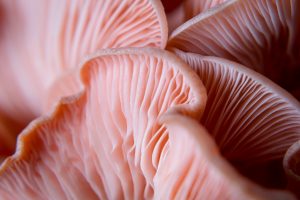
King Oyster Mushroom
King oyster mushroom Pleurotus eryngii (also called King Trumpet mushroom) is another of the cultivated oyster mushrooms. It has only been used in one cancer cell study to date with mixed results (Wong, 2020).
Chaga Mushrooms Health Benefits
To read more about chaga mushrooms health benefits, check out my blog called Chaga Mushrooms and cancer.
Mushroom Safety
Cultivated mushrooms from mushroom farms that you purchase in stores are safe and can be eaten either raw and cooked.
Wild mushrooms that you forage require caution and you need to be certain of what you are consuming. It’s best to forage with someone experienced who knows what is edible, what is not, and what is poisonous.
For medicinal mushrooms, safety data is not available from clinical trials and there have been negative side-effects reported in several cases (Zhao, 2020). If you do experience a negative side effects with a medicinal mushroom (or any supplement), you should report it to;
- FDA Safety Reporting Portal in USA
- Health Canada Report a Side-Effect in Canada
Bottom Line On Mushrooms
According to researchers in Germany, mushrooms make up a considerable but largely untapped source of new powerful products with pharmaceutical properties (Sari, 2017).
Given the benefits of mushrooms and few risk, I suggest you consume a variety of mushrooms regularly either– fresh or dried. You can eat the mushrooms cooked, as cooking does not destroy the beneficial components including the beta glucans.
There have been several studies with medicinal mushroom products as well such as powders with positive results. To decide which product to choose, I recommend using a brand that was actually used in the research.
You may prefer to wait until more research is conducted and more is know about the ideal mushroom supplement or blend, the dosage and how long you should take it. In which case, just keep including mushrooms in your diet.
To make this easier, you may also start to see mushroom functional foods like breads baked with mushroom powder and other products which you can try.
References for Are Mushrooms a Vegetable?…and Other Facts About Mushrooms
Ba DM, Gao X, Al-Shaar L, Muscat J, Chinchilli VM, Ssentongo P, Zhang X, Liu G, Beelman RB, Richie JP Jr. Prospective study of dietary mushroom intake and risk of mortality: results from continuous National Health and Nutrition Examination Survey (NHANES) 2003-2014 and a meta-analysis. Nutr J. 2021 Sep 21;20(1):80. doi: 10.1186/s12937-021-00738-w. PMID: 34548082.
Beelman, Robert B. PhD; Kalaras, Michael D. PhD; Richie, John P. Jr. PhD Micronutrients and Bioactive Compounds in Mushrooms. Nutrition Today: 1/2 2019 – Volume 54 – Issue 1 – p 16-22 doi: 10.1097/NT.0000000000000315
Betkowski, B. 3 Tips on how to tell an edible mushroom from a poisonous one. University of Alberta folio. Last updated July 11, 2018. Accessed Oct 1, 2021.
Borges GM, De Barba FF, Schiebelbein AP, et al. Extracellular polysaccharide production by a strain of Pleurotus djamor isolated in the south of Brazil and antitumor activity on Sarcoma 180. Braz J Microbiol. 2014;44(4):1059-1065. Published 2014 Mar 10. doi:10.1590/S1517-83822014005000019
Burke, A. Can Dogs Eat Mushrooms? American Kennel Club. Last updated May 25, 2017. Accessed Oct 2, 2021.
Campbell, M. How Mushrooms are Grown. Canadian Food Focus. March 22, 2017. Accessed Oct 2, 2021.
Cerletti C, Esposito S, Iacoviello L. Edible Mushrooms and Beta-Glucans: Impact on Human Health. Nutrients. 2021 Jun 25;13(7):2195. doi: 10.3390/nu13072195. PMID: 34202377; PMCID: PMC8308413.
Chen JN, Wang YT, Wu JS. A glycoprotein extracted from golden oyster mushroom Pleurotus citrinopileatus exhibiting growth inhibitory effect against U937 leukemia cells. J Agric Food Chem. 2009 Aug 12;57(15):6706-11. doi: 10.1021/jf901284s. PMID: 19606865.
Fenton TR, Huang T. Systematic review of the association between dietary acid load, alkaline water and cancer. BMJ Open. 2016 Jun 13;6(6):e010438. doi: 10.1136/bmjopen-2015-010438. PMID: 27297008; PMCID: PMC4916623.
Government of Canada. Canadian Nutrient File. Last modified Sept 8, 2021. Accesed Oct 2, 2021.
Dai X, Stanilka JM, Rowe CA, Esteves EA, Nieves C Jr, Spaiser SJ, Christman MC, Langkamp-Henken B, Percival SS. Consuming Lentinula edodes (Shiitake) Mushrooms Daily Improves Human Immunity: A Randomized Dietary Intervention in Healthy Young Adults. J Am Coll Nutr. 2015;34(6):478-87. doi: 10.1080/07315724.2014.950391. Epub 2015 Apr 11. PMID: 25866155.
Li J, Zou L, Chen W, Zhu B, Shen N, Ke J, Lou J, Song R, Zhong R, Miao X. Dietary mushroom intake may reduce the risk of breast cancer: evidence from a meta-analysis of observational studies. PLoS One. 2014 Apr 1;9(4):e93437. doi: 10.1371/journal.pone.0093437. PMID: 24691133; PMCID: PMC3972098.
Majtan J. Pleuran (β-glucan from Pleurotus ostreatus ): an effective nutritional supplement against upper respiratory tract infections? Med Sport Sci. 2012;59:57-61. doi: 10.1159/000341967. Epub 2012 Oct 15. PMID: 23075555.
Mori K, Inatomi S, Ouchi K, Azumi Y, Tuchida T. Improving effects of the mushroom Yamabushitake (Hericium erinaceus) on mild cognitive impairment: a double-blind placebo-controlled clinical trial. Phytother Res. 2009 Mar;23(3):367-72. doi: 10.1002/ptr.2634. PMID: 18844328.
Mushooms.ca Select, Care and Store. Accessed Sept 25, 2021. https://www.mushrooms.ca/select-care-store/
Natural Medicines Database. Beta-Glucans. Last updated Aug 17, 2020. Accessed Sept 30, 2021. (Subscription required to access).
Sari M, Prange A, Lelley JI, Hambitzer R. Screening of beta-glucan contents in commercially cultivated and wild growing mushrooms. Food Chem. 2017 Feb 1;216:45-51. doi: 10.1016/j.foodchem.2016.08.010. Epub 2016 Aug 5. PMID: 27596390.
Scott A. FODMAP Guide to Mushrooms. A Little Bit Yummy. Last updated Aug 7, 2017. Accessed Oct 6, 2021.
Sher S. How to: Grow Mushrooms at Home. Accessed Oct 6, 2021.
Shin A, Kim J, Lim SY, Kim G, Sung MK, Lee ES, Ro J. Dietary mushroom intake and the risk of breast cancer based on hormone receptor status. Nutr Cancer. 2010;62(4):476-83. doi: 10.1080/01635580903441212. PMID: 20432168.
Sima P, Vannucci L, Vetvicka V. β-glucans and cholesterol (Review). Int J Mol Med. 2018 Apr;41(4):1799-1808. doi: 10.3892/ijmm.2018.3411. Epub 2018 Jan 22. PMID: 29393350; PMCID: PMC5810204.
Steimbach L, Borgmann AV, Gomar GG, Hoffmann LV, Rutckeviski R, de Andrade DP, Smiderle FR. Fungal beta-glucans as adjuvants for treating cancer patients – A systematic review of clinical trials. Clin Nutr. 2021 May;40(5):3104-3113. doi: 10.1016/j.clnu.2020.11.029. Epub 2020 Nov 28. PMID: 33309412.
Walsh, D. Biotherma Pharmaceuticals Presents Data Broadening Imprime PGG Mechannism of Action. Last updated Nov 13, 2017. Accessed Oct 4, 2021.
Wong JH, Ng TB, Chan HHL, Liu Q, Man GCW, Zhang CZ, Guan S, Ng CCW, Fang EF, Wang H, Liu F, Ye X, Rolka K, Naude R, Zhao S, Sha O, Li C, Xia L. Mushroom extracts and compounds with suppressive action on breast cancer: evidence from studies using cultured cancer cells, tumor-bearing animals, and clinical trials. Appl Microbiol Biotechnol. 2020 Jun;104(11):4675-4703. doi: 10.1007/s00253-020-10476-4. Epub 2020 Apr 9. PMID: 32274562.
Wu L, Zhao J, Zhang X, Liu S, Zhao C. Antitumor effect of soluble β-glucan as an immune stimulant. Int J Biol Macromol. 2021 May 15;179:116-124. doi: 10.1016/j.ijbiomac.2021.02.207. Epub 2021 Mar 3. PMID: 33667560.
